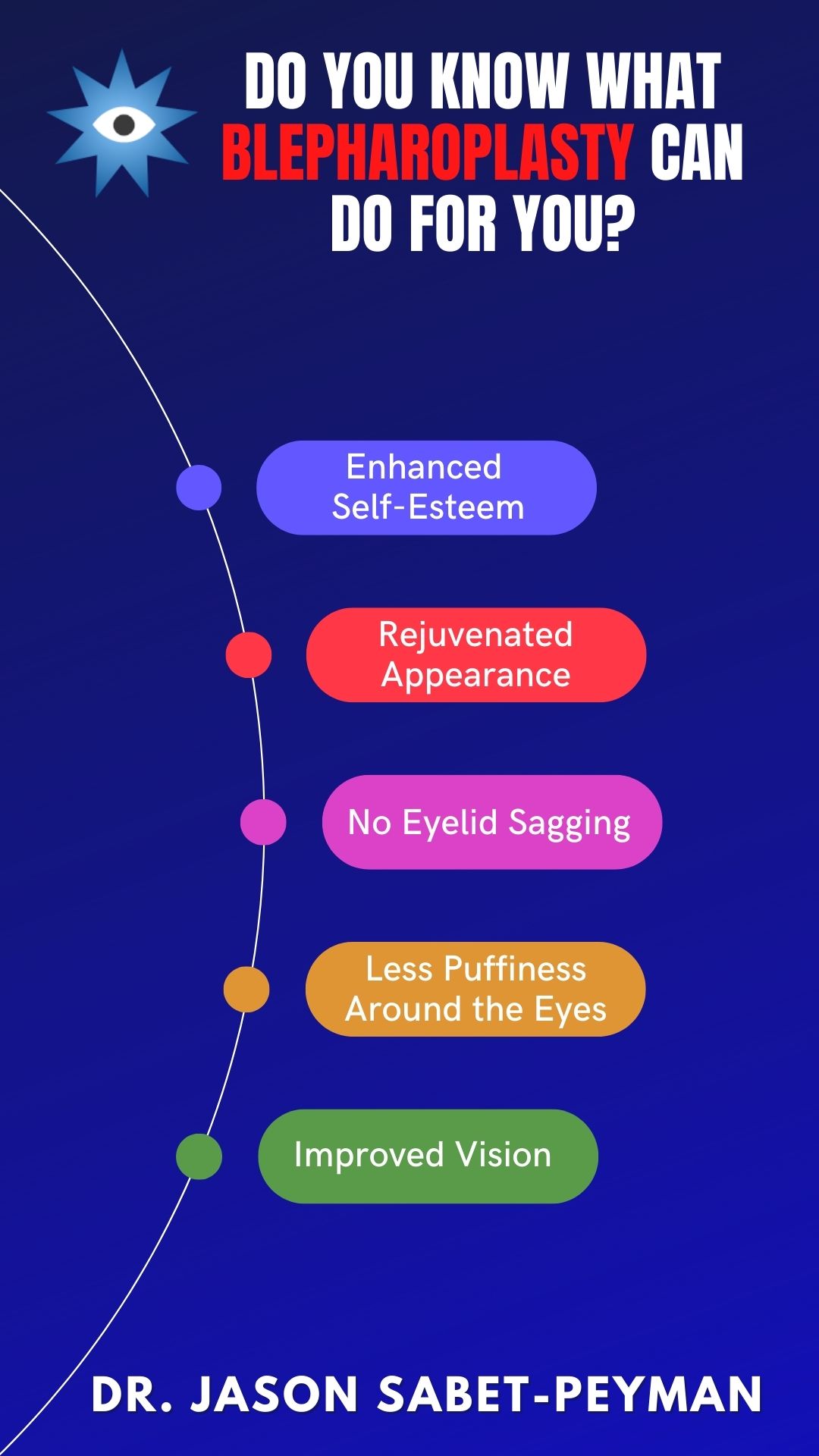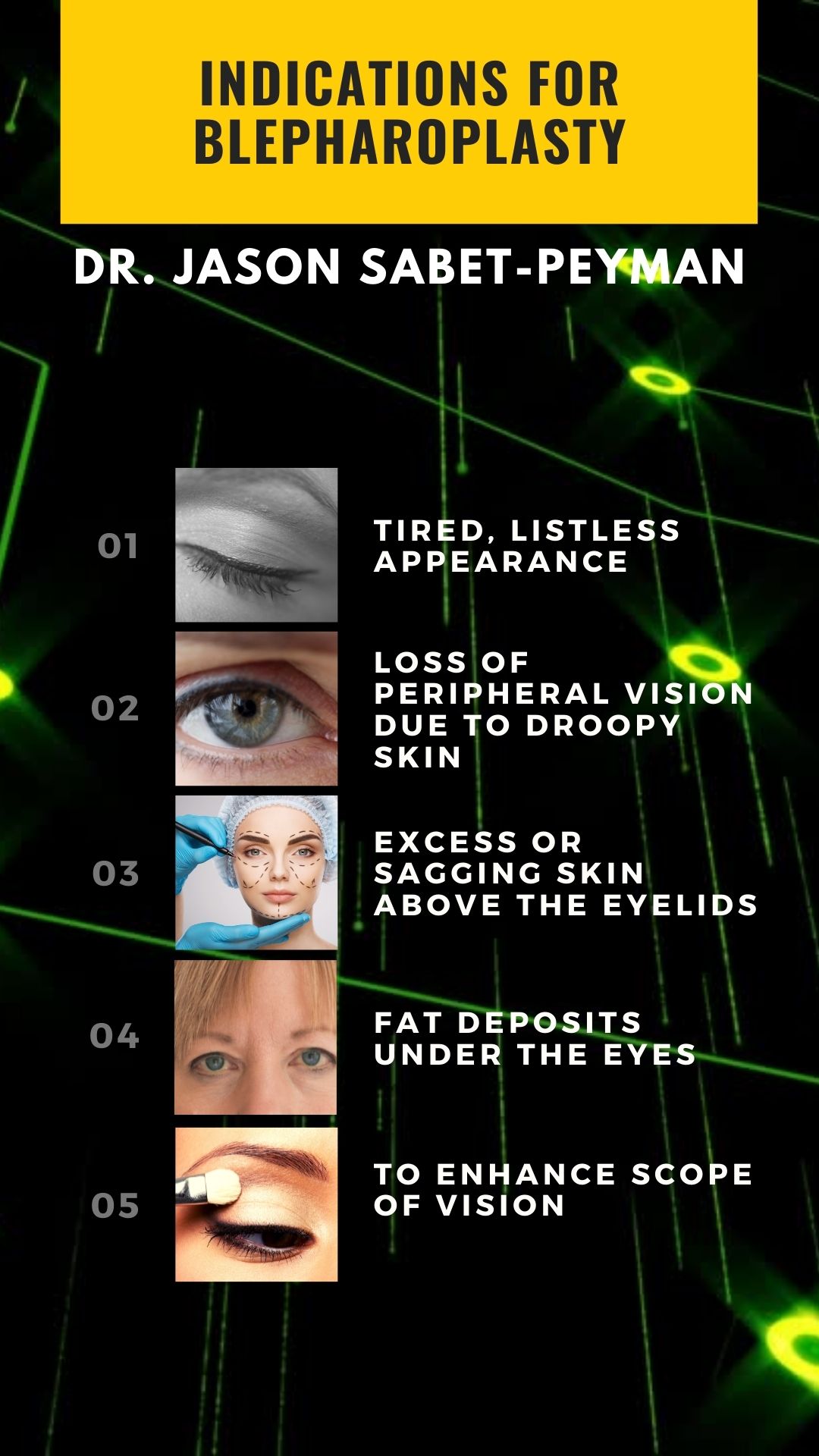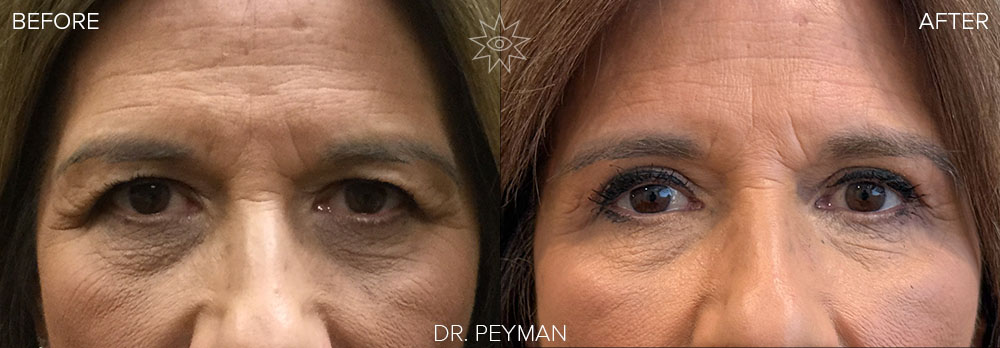A Picture is Worth a Thousand Words: Understanding Your Eyelid Rejuvenation Options Many of us notice changes around our eyes as we …
Top Eyelid Surgeon Orange County CA
Best Eyelid Surgeon Orange County California
Dr. Jason Sabet-Peyman grew up in California. He did his undergraduate studies at the University of California, Berkeley where he graduated with high honors and subsequently spent a year at the National Institute of Health doing science research. Dr. Jason Sabet-Peyman completed his medical training at the Johns Hopkins School of Medicine. He pursued his ophthalmology residency training at the Doheny Eye Center, followed by a two year fellowship in Oculofacial Aesthetic & Reconstructive Surgery at the Duke University Eye Center.What are the different types of blepharoplasty?
Upper and lower eyelid blepharoplasty are different in their approaches and aims. While upper eyelid blepharoplasty always involves external skin reduction and may or may not involve fat reduction, lower eyelid blepharoplasty is usually approached internally (through the conjunctiva, not the skin) and almost always involves fat reduction but not necessarily skin reduction. In patients with lots of lower eyelid redundant skin, there can be a role for an external lower eyelid blepharoplasty where some skin is removed, and the lower eyelid tightened. The specific approach depends on the patient’s presentation and each surgery is customized to the patient. Dr. Peyman will thoroughly explain the approach for your case and explain the reasoning, so you feel well-informed and prepared for your procedure.
Why should Dr. Sabet-Peyman perform your Blepharoplasty?
Dr. Jason Sabet-Peyman is an oculofacial surgeon in Fullerton, Orange County focusing entirely on upper facial procedures, specifically involving the eyelid, nasolacrimal system, and orbit. He enjoys performing a variety of procedures customized to meet the demands of each specific patient personally and culturally and appreciates the intricacies of each specific procedure. The patient is the center of the entire experience from start to finish. No procedure is scheduled until the diagnosis and treatment options have been described, all operative instructions are clear, and all questions are answered. Dr. Jason Sabet-Peyman will work with you to get the best results possible in the most cosmetically appealing way.Would you like fresh eyelids?
Call us today to schedule your consultation! (714) 449-1940The average cost of blepharoplasty in Orange County, CA
Blepharoplasty procedures in Orange County typically range from $3,000 to $5,000 for both upper eyelids and between $3,000 to $5,000 for both lower eyelids. Combined procedures are usually discounted. Total price estimates include the specific procedures necessary to get the best results, surgeon’s fees, operating room fees, pre-op, and follow-up visits.The recovery process for blepharoplasty
The recovery process is usually easy for patients as there is very little pain and no covers over the eyes, allowing patients to function normally while taking care not the bend, strain, or lifting to minimize the amount of bruising and swelling. Additionally, patients are advised to sleep with the head of the bed slightly elevated, apply ice over the stitches throughout the day, avoid direct water exposure to the eyes, and to avoid rubbing the eyes. The amount of time taken off from work varies from person to person, depending on how self-conscious a patient is about the swelling and bruising. The average patient takes about a week off to allow for most of the bruising and swelling to subside. Complete recovery from upper eyelid surgery usually takes several weeks to months.Which doctor is best for eyelid surgery?
An experienced specialist with fellowship training in oculofacial surgery and a background in ophthalmology is most qualified to perform your eyelid surgery. Oculofacial surgery is a specialty of ophthalmology focused entirely on surgeries involving the upper facial area. Oculofacial surgeons have a thorough knowledge of the eye and the delicate surrounding eye anatomy which is critical to surgical success.What is the success rate for blepharoplasty?
The success rate for blepharoplasty, or eyelid surgery, is quite high according to a study that was recently published in the medical journal JAMA Facial Plastic Surgery. The study looked at 47 patients who had undergone the surgery and found that 91.5% of them had excellent results in terms of symmetry. Patient satisfaction, perhaps the most important metric for success, is very high based on Dr. Peyman’s experience over the past several years.What is the most frequent justification for having a blepharoplasty done?
A blepharoplasty, also known as an eyelid lift, is a common procedure to treat droopy or baggy eyelids, sagging/excess skin, puffiness, and wrinkles around the eyes. The most common reason patients undergo this surgery is to improve their appearance and self-confidence. Patients want to look more like how they feel. Other reasons may include functional problems such as difficulty with peripheral vision.How long is recovery from upper blepharoplasty?
Patients who have undergone upper lid surgery, or blepharoplasty, will usually be able to go back to their normal activities after 7-10 days. Recovery from blepharoplasty is typically shorter and less uncomfortable than recovery from other types of cosmetic surgery. Most patients report only minor discomfort, bruising, and swelling after blepharoplasty, and this usually subsides within a week. It is important to avoid strenuous activity or rubbing the eyes during the healing process to prevent complications. In most cases, patients can return to work and other normal activities within a week after surgery. Most patients are very pleased with the results of their blepharoplasty and find that it significantly improves their appearance.What is the best surgery for under eye bags?
If you’re considering surgery to get rid of under eye bags, a lower eyelid blepharoplasty is an option worth exploring. This outpatient procedure can be done in your surgeon’s office and involves readjusting the fat in the lower eye area. The procedure can be done internally through the inner lower eyelid lining or externally through the outer lower eyelid skin. While they each have their advantages and disadvantages, the internal approach is usually preferred as it minimizes scarring and down time, and leads to a very natural, rejuvenated look. The best option will be thoroughly discussed during your consultation.What is a lower lid blepharoplasty?
A lower lid blepharoplasty is a type of surgery that aims to improve the appearance of the lower eyelids. It usually involves accessing each of the 3 lower eyelid fat pads and removing and repositioning the right amount of fat to create a less tired, more rejuvenated, yet natural appearance. There are a few approaches to lower eyelid blepharoplasty. The best approach for you will be discussed at your consultation. Recovery is typically quick, and most patients can return to their normal activities within a week or two.Is blepharoplasty a dangerous procedure?
While there are risks to any procedure, when performed by a specialist in oculofacial surgery, lower eyelid blepharoplasty is very safe with minimal risk. Healing time is generally quick and the results are almost always excellent.What is the difference between ptosis surgery and blepharoplasty?
Blepharoplasty is designed to remove excess skin and fat to rejuvenate the eyelid area. A ptosis procedure is designed to lift the upper eyelid platform by advancing the muscle that lifts the eyelid. Sometimes both procedures are necessary and can be done through the same incision at the same time. Regardless of the type of eyelid procedure, the recovery time is roughly the same and both can be performed in the office. The best type of eyelid surgery for you will be thoroughly discussed at your consultation.How do you prepare for a blepharoplasty?
At your consultation and during a subsequent appointment 2 weeks prior to your surgery, Dr. Peyman will provide step by step instructions on what to do before the procedure, the day of the procedure, and after the procedure to ensure a successful surgery and quick recovery. This includes answering all questions and discussing the medications needed for surgery. The risks, benefits, and alternatives to the procedure will be also reviewed. All patients need to be medically cleared by their primary physician within 1 month of their procedure date. Preoperatively, patients will be asked to minimize or hold (only if approved by their primary physician) blood-thinning medications to reduce bleeding and bruising. Patients will need a ride to and from their procedure. Patients need to be fasting the day of the procedure if scheduled in the operating room but not in the office. Postoperatively, patients should apply cold compresses over the operated areas for about 20 minutes every hour throughout the day when awake over the first 72 hours. They should keep the head of the bed elevated about 30 degrees when sleeping at night on their back facing the ceiling. They should avoid any direct water pressure to the face, and avoid bending, straining, lifting, or anything that may increase blood flow to the head. Walking is permitted. They should also use their medications as prescribed. A complete set of written instructions for your procedure will be provided during the preoperative appointment.What do your eyes look like after blepharoplasty?
Immediately after surgery, your eyes will look normal. Most of the bruising and swelling don’t occur until the next day. The extent of bruising and swelling varies among patients but will be minimized by following all the instructions provided like icing the eyes and keeping the head elevated. Every day thereafter the extent of bruising and swelling will improve and by the end of the 1-2 weeks, most patients are doing very well.Can eye bags return after blepharoplasty?
Generally, the fat pads creating the bags under the eyes do not recur after a successful procedure. It is rare to ever do another procedure for eye bag removal.Is there an alternative to blepharoplasty?
There are options for patients that are not surgically inclined. Non-surgical treatments such as laser skin resurfacing, injectable dermal fillers, and Botox can be discussed at your consultation. The differences between the treatment modalities, expected outcomes, and risk with each will all be discussed during your consultation. There may be more than one alternative to surgery that can be tried to get optimal results. Laser skin resurfacing is a great way to non-surgically tighten and renew the skin. It is safest in lighter-skin-toned patients. Botox works well to minimize dynamic skin wrinkles by temporarily paralyzing muscles. And dermal fillers can be a nice alternative for adding volume to mask mild lower eyelid bags, and to add volume to other areas of the face.Who should not get eyelid surgery?
Patients who have fluctuating eyelid positions may need to be further worked up before having any eyelid procedures. Patients who have underlying eye issues such as severe dry eye should not have any eyelid surgery until the eye is treated appropriately and the issues are completely resolved as eyelid surgery may exacerbate the condition.


